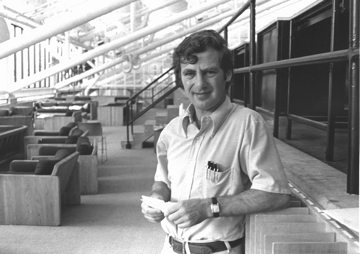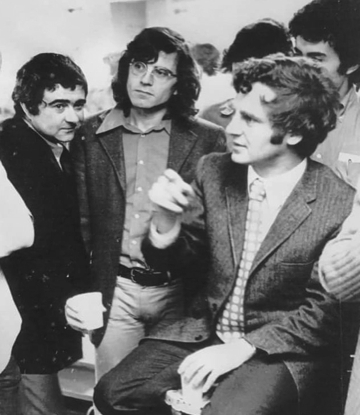Who was Werner Seligmann? (continued)
• But most importantly, from the Syracuse office he was to meet a talented art student—Jeannie Liberman, from nearby Cortland—who would become his spouse and which explains how and why Seligmann ended up in Cortland, New York. Upon their return from the ETH in Zurich, in 1961, Seligmann opened his first practice, a sole proprietorship.
From 1961-74, Seligmann was also an Associate Professor of Architecture at Cornell; then an Associate Professor of Architecture at Harvard University from 1974-76; then Dean and Professor of Architecture at Syracuse University, where he served from 1976-90; then, from 1990 to 1994, he was the Karl Moser Professor of Architecture at the ETH in Zurich; and finally, on his return to the US, in 1994, he was named Distinguished Professor of Architecture at Syracuse University.
Seligmann's work has been exhibited in the US and abroad. Seligmann wrote and lectured extensively on the works of Frank Lloyd Wright, Le Corbusier, Mies van der Rohe, Alvar Aalto, Richard Neutra, and many other contemporary architects.
Seligmann placed in national and international competitions, including the invited exhibition XVII Milan Triennale and, in 1995, the Topography of Terror, on the former site of the SS headquarters in Berlin.
He was awarded the Topaz Medallion from the Association of Collegiate Schools of Architecture (ASCA) and the American Institute of Architects (AIA) as recognition of his being a role model both as a teacher and professional architect.
As a professional, the work of Werner Seligmann won two Progressive Architecture Design Awards, was illustrated on the cover of Progressive Architecture three times and placed or won several national and international design competitions. His built designs and reviews of housing prototypes established his reputation in the design of housing.
His world travels were in pursuit of exceptional buildings of any era, but in particular Renaissance, Baroque, and, of course, modern. He was possessed of an exceptional memory for buildings as his descriptive sketches and drawings demonstrate.
His architecture and urban designs were inspired by contemporary art, in particular Cubism. His buildings are meticulously detailed, technically researched, spatially precise and always inventive.
All of his activities as a teacher, practicing professional, and scholar have had one goal: the perpetuation of the discipline of architecture as a noble and valuable profession. The substance of his contributions, the passion of his convictions and the beauty of his creations as an architect exemplify the best of modern architecture.
iii

